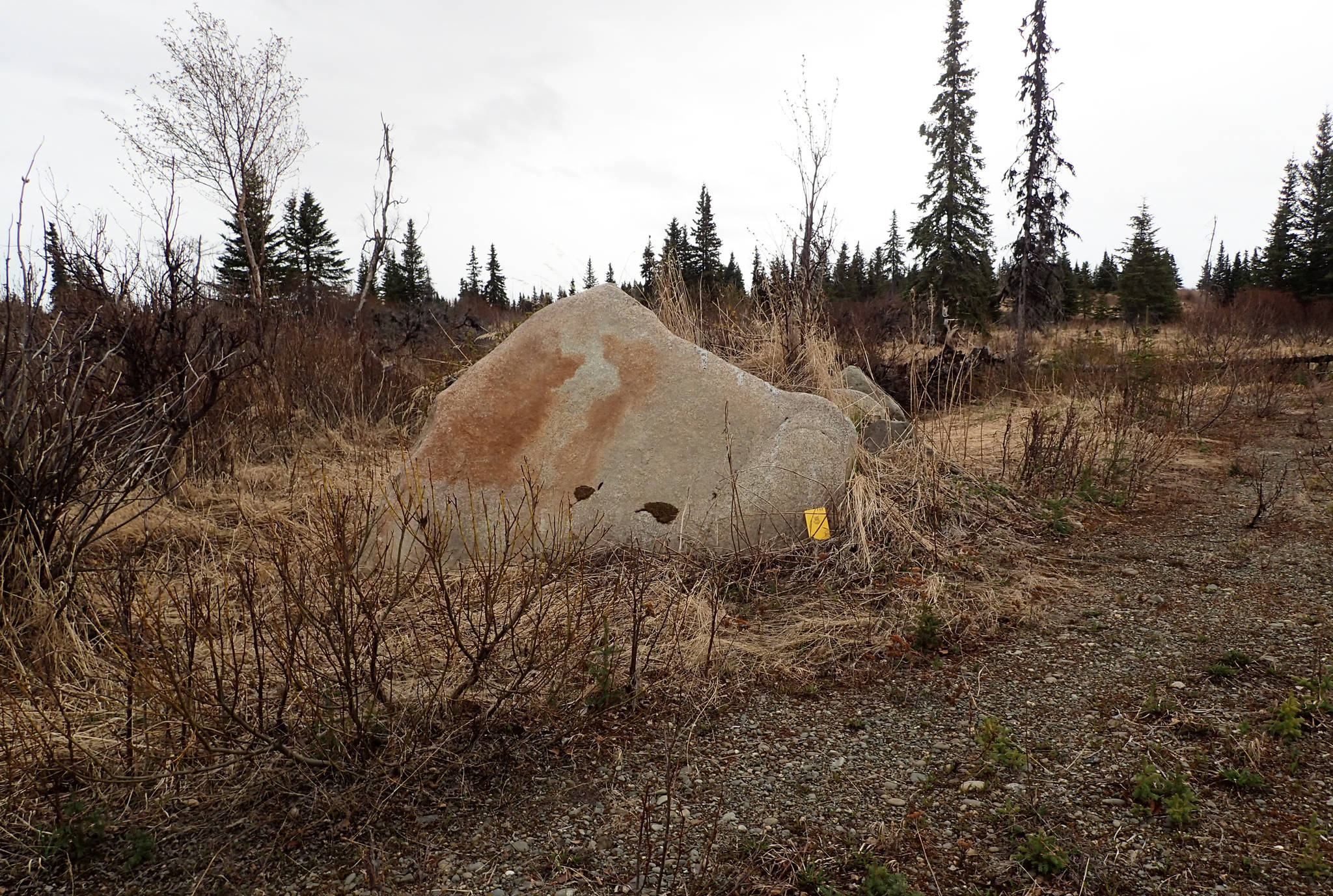Glaciers have carried granitic boulders 200-plus miles down Cook Inlet from interior mountains during the last two glaciations. The most recent glaciation deposited hundreds of these “erratic” boulders in the Sterling-Soldotna area. This glacial expansion, known as the Moosehorn stade, climaxed about 22,000 years ago, we think. The earlier glaciation was much larger, nearly filling the Cook Inlet trough, almost covering the Caribou Hills and extending beyond Kodiak. We estimate the age of this “penultimate” glaciation at 50-70,000 years, based on dates of similar glaciations in the Alaska and Brooks Ranges.
We want to pin down the timing of these two glacial advances, and possibly get dates on even older glaciations. We plan to use “cosmogenic exposure” dating to estimate how long the boulders have been sitting in their present positions after being dropped by retreating glaciers.
Here is the basic idea: The Earth’s surface is constantly bombarded by cosmic rays created by supernovae explosions many light years away. These cosmic rays create new elements (isotopes) like Beryllium-10 and Chlorine-36 in the upper surface of boulders exposed to the sky. The outer inch of a boulder can be sampled and taken into a lab to measure the new isotopes; the greater the proportion of new isotopes, the longer the exposure. Granitic rocks are particularly good for this kind of dating because their quartz crystals trap the new isotopes.
Cosmogenic dating doesn’t tell the age of the rock; it only tells how long the rock surface has been exposed to cosmic rays. The rock itself is much older, perhaps 50 to 250 million years. During the relatively recent glaciations, massive avalanches brought this rock down onto glaciers which carried it to the Kenai Peninsula.
Granitic boulders can be found throughout upper Cook Inlet, the Anchorage bowl, and across the Kenai Peninsula lowland to the mouth of Kachemak Bay. They could potentially be found on Kodiak, at the southern end of past glacial advances.
We need boulders that have not been disturbed since they were dropped by the melting glacier. Boulders on the beach, along rivers or in gullies cannot be used because they have been eroded out of the glacial deposits. They were protected from cosmic ray exposure by the overlying soil, and they may have been tipped or rolled when they were exhumed by erosion. The tops of such disturbed boulders could give dates that are thousands of years too young.
The best boulders are on uplands or in flat muskegs, with little soil or vegetation cover, and tall enough to be above most of the snow, say 3-5 feet high. There are many such boulders in the Soldotna-Sterling area (from the Moosehorn glacial advance), but they are few and far between on the southern Kenai (from the penultimate glaciation).
Please contact us if you know of any granite boulders on the southern Kenai which might be suitable for this study. Ed Berg is in Homer (608-628-2088, edwardberg100@gmail.com) and Dick Reger lives in Soldotna (907-394-1081, regerrd80@gmail.com).

